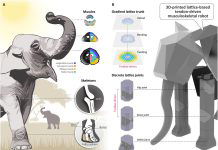
A Glimpse into the Study
Here’s some exciting news. A team of scientists from Harvard Medical School and the University of Copenhagen have created an artificial intelligence (AI) tool.
What’s unique about this tool? It can identify people who are at a high risk of getting pancreatic cancer, up to three years before they are diagnosed.
How does it do this? It uses the patients’ medical records. Their findings were published in Nature Medicine on May 8.
Why is this Important?
Pancreatic cancer is one of the deadliest cancers around the globe. It’s usually found in advanced stages when treatments aren’t as effective.
This means survival rates are low. We need better tools for early detection. This new AI tool could be a game-changer.
Today, we don’t have any tools to screen large groups for pancreatic cancer.
We do screen people with family history and certain genetic mutations in a more targeted way. But this approach misses some cases.
AI: A Potential Game Changer
The AI tool developed by the researchers could help us zero in on those most at risk.
Chris Sander, a faculty member at the Harvard Medical School and a co-senior investigator on this study, highlighted the tool’s potential.
He said it could improve decisions about who needs further testing. This is crucial, as these tests can be invasive and expensive, and also carry their own risks.
Using AI could help us find pancreatic cancer earlier. This could lead to earlier treatment, better outcomes, and longer life spans for patients.
How the Study Was Conducted
The researchers trained the AI algorithm using two separate sets of data. These included 9 million patient records from Denmark and the United States.
The AI model was asked to look for signs of pancreatic cancer in the records. It did this by examining combinations of disease codes and when they occurred.
The researchers tested different versions of the AI models. They wanted to see how well they could identify people at risk of getting the disease within different time scales: 6 months, one year, two years, and three years.
Breaking Down the Current Screening Methods
Screening for common cancers like breast, cervix, and prostate gland has become easier with effective techniques like mammograms, Pap smears, and blood tests.
But for pancreatic cancer, it’s a different story. The detection methods are more complicated and costly.
Right now, doctors mainly look at family history and genetic mutations. While these are important indicators, they often miss many patients.
The new AI tool could be used for all patients, not just those with known genetic risk or family history.
The Challenges of Pancreatic Cancer
The pancreas is located deep in the abdomen, which makes it difficult to access for testing. Because of its sensitivity, it’s often referred to as “the angry organ.”
If pancreatic cancer is diagnosed in the early stages, about 44 percent of people survive for at least five years.
But only 12 percent of cases are diagnosed this early. When the cancer has spread, the survival rate drops dramatically, to between 2 to 9 percent.
How the AI Model Works
The researchers created several versions of the AI model. They trained these on the health records of 6.2 million patients from Denmark’s national health system over 41 years.
Of these patients, 23,985 developed pancreatic cancer over time.
The AI model looked at patterns based on disease trajectories. These are conditions that occurred in a certain sequence over time.
Diagnoses like gallstones, anemia, type 2 diabetes, and other GI-related problems indicated a greater risk for pancreatic cancer within 3 years.
Testing the AI Model
After training the AI models, the researchers decided to put them to the test. They used a fresh set of patient records from the U.S. Veterans Health Administration.
This dataset contained nearly 3 million records spanning 21 years and included 3,864 individuals diagnosed with pancreatic cancer.
However, the AI tool’s performance dipped a bit on this dataset. The researchers believe this was due to the shorter timeframe of the U.S. dataset and the different patient profiles compared to the Danish dataset.
To improve its accuracy, they trained the AI model from scratch using only the U.S. dataset. The results were much better.
This highlighted the importance of using high-quality and rich data, as well as the need for AI models to be trained on local health data to account for population differences.
The Future of AI in Pancreatic Cancer Screening
The findings of this study show that AI can be a powerful tool in the fight against pancreatic cancer.
By accurately identifying those at the highest risk years before diagnosis, we can begin treatments earlier, potentially improving outcomes and prolonging patients’ lives.
However, it’s essential to remember that these AI tools are not stand-alone solutions. They should be used alongside traditional screening methods and under the guidance of healthcare professionals.
Also, while AI can predict risk, it doesn’t mean that everyone identified as high-risk will develop pancreatic cancer.
In conclusion, AI presents a promising opportunity to change the trajectory of pancreatic cancer. Its use in healthcare is only just beginning, and this study represents a significant step forward in its potential applications.
As we continue to develop and refine these tools, we can only expect to see more breakthroughs in the future.
If you care about cancer, please read studies about how to reduce pancreatic cancer spread by nearly 90%, and green tea could help reduce death risk in type 2 diabetes
For more information about health, please see recent studies about new way to increase the longevity of cancer survivors, and results showing vitamin D supplements strongly reduces cancer death.
The study was published in Nature Medicine.
Copyright © 2023 Knowridge Science Report. All rights reserved.



